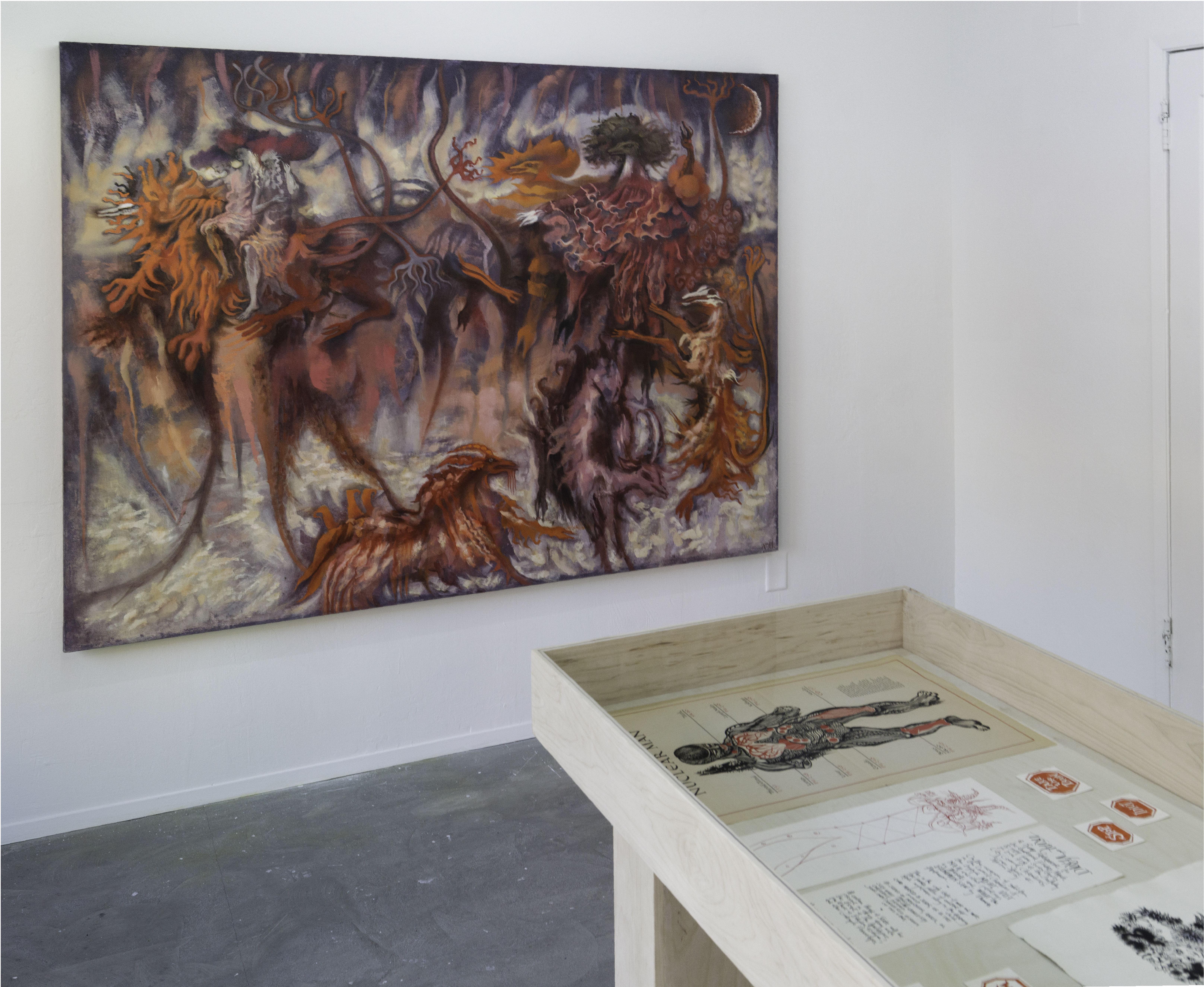
Ariel
organized by Zully Adler
Part one: December 7 - 22, 2024
Part two: January 11 - 26, 2025
Opening reception:
December 7, 2024
5:00 - 8:00 pm
Checklist
Inquiries: cole@houseofseiko.info
We are thrilled to announce an exhibition of rarely seen work by visionary Bay Area artist Ariel Reynolds Parkinson (1926 - 2017) organized by Zully Adler.
For every chapter of Bay Area bohemianism there was also Ariel, carving her own channels between what she called “Beat then Hip, then Rock, Love, the Natural World.” At first, in the late 1940s, she found herself among the poets and playwrights of the so-called Berkeley Bunch. Younger than many and one of few women, she maintained a sharp and sometimes ironic distance from their oblivious masculinity, even if she also enjoyed their “pacifist, anarcho-syndicalist, syncretist, pan-cultural gatherings.” Then she studied at the California School of Fine Arts, painting under Hassel Smith when “Dream was in, and Cosmos.” After that, the dawn of the hippie movement, walking to the Human Be-In with her young friend Allen Ginsberg and holding a sign that read “I Represent the Lower Animals.”
Sensitive as she was to new tendencies and social change, Ariel also maintained old-world decorum and an archaic, arch-romantic sensibility. San Francisco critic Alfred Frankenstein compared her to William Blake, as if her work belonged to a previous century. Her style skews surreal and whimsical, with a grotesque undercurrent drawn from the darker elements of Art Nouveau. It is seductive but also repellent, producing what she called “the posture of cruel joy”—like the Worm Queen from her friend Helen Adam’s San Francisco’s Burning: A Ballad Opera:
My crown is crusted with carrion flies
And my head is bald and wet,
But the loveliest woman of living flesh
With you will quite forget.
Ariel’s imagery finds its closest companions with characters like this. For her, art was storytelling, and painting carried “the piercing, noble, haunted power to imagine.” Many pieces reference Shakespeare, the Brothers Grimm, and classical mythology. Others conjure what she called the “mists and tempests, sea foam, clouds, smoke, waves” found in the prose of Ruskin. It may have helped that she lectured in English at Mills College, that her husband was the revered poet and professor Tom Parkinson, and that her friends were largely writers. Ariel herself wrote with the verbosity and prosody of a Victorian in recital: “Beyond the writhing fish and the live chickens, the glowing fruit, and the towering gold and cream of Italian baking, glimpses of city towers, glimpses of the grey-green, wind-battered surface of the bay.” That’s San Francisco. Over the decades, she committed increasing efforts to illustration and costume design for opera, ballet, and theater, her artwork put in the service of the stories that inspired her in the first place.
Ariel’s creative anchor was always nature. Specifically, “the California of John Muir, Ishi, and Kroeber.” When stuck in the city, she could turn to what Gary Snyder called the inner wilderness, an interior plain of marshes and tidepools overgrown with “Ur-vegetation.” The work that emerged from this wilderness allowed Ariel to found a movement of one: bio-classicism. And when one curator dismissed her painting as a puddle of swamp water, the artist was undisturbed. She drew harsh caricatures of industrial barons and other enemies of the planet. More becoming drawings graced protest banners and guidance on a new municipal project known as recycling. Ariel became a thorn in the side of the Solid Waste Management board. “Garbage is simply resources out of place, and I was its Joan of Arc.” Ultimately, she left the project of recycling behind and made convincing arguments for doing away with packaging entirely.
Whether fearsome, dainty, erotic, or in dissent, the artworks of Ariel are guided by the senses. Paintings and drawings emerged from what she called “various admixtures and applications of the pleasure principle.” Nature was something to safeguard in part because it was interesting to see, feel, smell, and taste. Watching her watercolor spread is satisfying; her human figures are voluptuous. The writers and artists in her company—Robert Duncan, Anaïs Nin, Jack Spicer, Jess, Kenneth Rexroth, Norman O. Brown—were not so different. They exalted feelings, even ugly ones, for how much they could be felt. Neither Ariel nor the Worm Queen play favorites in this realm. They provoke goosebumps as much as induce repose. In the inner wilderness, sensations are vital, but they won’t always make you feel better.
- Zully Adler






follow us on social media for updates.
inquiries: cole@houseofseiko.info
photography courtesy of Ryan Whelan